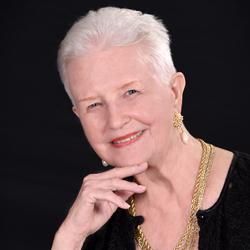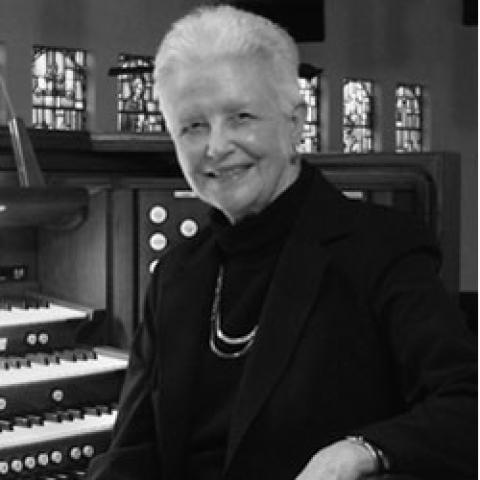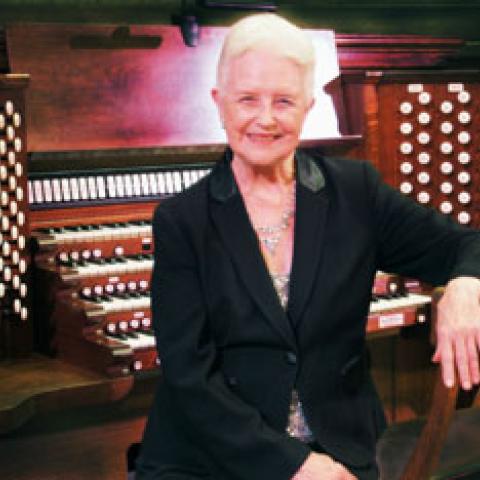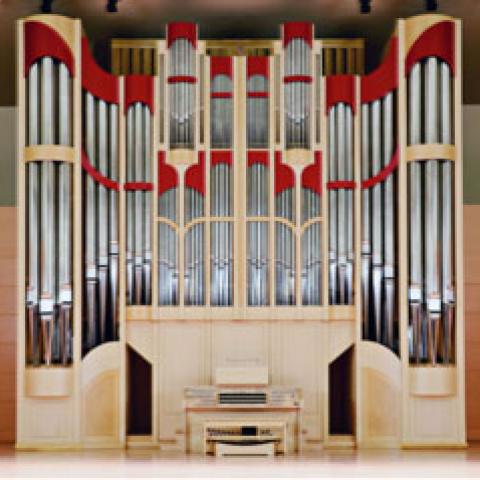Rudolf von Beckerath Orgelbau, Hamburg, Germany
Maurine Jackson Smith Memorial Organ, University of Nevada, Las Vegas, Doc Rando Recital Hall
The public perception of Las Vegas is hardly one that conjures up visions of fine pipe organs. Some people who visit Las Vegas for the first time are amazed to find schools, lovely houses, and churches. At one time, Las Vegas boasted more churches per capita than any other city in the country. A recent survey counted a total of 33 pipe organs currently in Las Vegas churches, LDS chapels, and residences. Most of the church instruments tend to be relatively small. The big boom in the growth of the city (now approaching two million residents) paralleled the arrival of the mega-church, improved electronic organs, and more informal styles of worship that do not usually include the installation of organs of any kind.
It may come as a surprise that the Maurine Jackson Smith Memorial Organ, installed at the University of Nevada, Las Vegas (UNLV) in the Beam Music Center’s new Dr. Arturo Rando-Grillot Recital Hall, though modest in size (38 stops, 53 ranks, three manuals and pedal), is the largest pipe organ in Nevada. The hall seats 300 and is acoustically supportive of the organ.
Maurine Jackson Smith was an accomplished organist in Las Vegas and conscientiously served as a long-time church musician in several local wards of the Church of Jesus Christ of Latter-Day Saints. After raising her family, Mrs. Smith entered the University of Nevada, Las Vegas to obtain her bachelor’s degree with a major in history, graduating magna cum laude. Mrs. Smith died on October 1, 1999, after a protracted and valiant fight against cancer. The UNLV organ was given in her memory to the university and the community by her family, the Edward D. Smith family. Through this magnificent gift, her lovely spirit and devotion to excellence continue to perpetuate her memory and to inspire.
When the promise of funding for the building of an organ at UNLV was made, the choice of an organbuilder was begun by a search committee, appointed by then chair of the music department, Dr. Paul Kreider. The committee included Dr. Isabelle Emerson, Ethelyn Petersen, and Dr. Paul S. Hesselink. Dr. Kreider served in an ex-officio capacity. At its first meeting in March 2000, the committee decided that the organ must be a quality mechanical-action instrument of three manuals and pedal. Subsequently, the committee considered 18 organbuilders from Germany, Italy, England, Denmark, Canada and the United States. After visiting instruments by many of these builders, the committee chose Rudolf von Beckerath Orgelbau of Hamburg, Germany to be the builder. Two members of the committee were invited to visit the workshop in Hamburg and to see and play several instruments nearby, recently completed by the company. The Beckerath instrument initially visited by the committee had been designed and voiced by Herr von Beckerath (died 1976), so there were concerns that the qualities admired in that instrument be evident in the current work of the firm.
The project was expedited by the willingness of the donor to assume responsibility for contracting and its attendant technical logistics for the building and installation of the instrument. All aspects of the contract were turned over to his business manager, who was fluent in German. Procedural red tape, which is often part of the baggage of working with a state-supported university system, was avoided. In effect, Mr. Smith contracted for the organ to be built, was granted permission to have it installed at the university, and after installation, donated the instrument to the university. The committee stayed in close contact with the von Beckerath company throughout the process; all business arrangements were conducted with Holger Redlich, manager of the firm.
The building of the organ, from the time of signing the contract to completion, took about four and a half years. The case, pipes, windchests, and mechanism were constructed piece by piece in the Hamburg factory by 14 artisans over a period of about ten months and then securely packed into three semi-trailer-sized waterproof, sealed containers. These containers were loaded on a ship in the Hamburg harbor and made the five-week sea voyage to Los Angeles. After a customs inspection, the containers were loaded on flatbed trucks and driven to Las Vegas. They arrived in Las Vegas mid-June 2004. Voicing of the instrument was done by Rolf Miehl, tonal director of the company.
The organ is approximately 25 feet high, 20 feet wide and 8 feet deep. The organ case is constructed from blond ash wood and has color accents of deep red that contrast with the silver color of the façade pipes; the university colors are red and gray. The rather plain lines of the modern hall immediately focus on the imposing organ case. People visiting for the first time are routinely heard to exclaim, “Wow!”
The organ has a sophisticated sequencer and combination action making possible 4,000 settings. This feature is especially helpful in teaching, as each student can be assigned 100 or more pistons; students can preserve the registrations chosen for the works they are studying, so that time is not wasted in resetting pistons during practice times or lessons. The stops are numbered for ease in writing down registrations.
The terraced French-style console has naturals covered in granadilla wood, and sharps covered in bone. The oversized music rack is adjustable both forward and vertically. An on/off foot piston prevents accidental use of the crescendo pedal when in the off mode. Other foot pistons provide for Plenum, Mixtures Off, Reeds Off, and Sforzando settings and the usual coupler reversibles. The sequencer can be accessed (forward and backward) from the middle (below the Positiv keyboard), from the left and right sides of the console, and a forward foot piston is conveniently located next to the crescendo pedal for forward motion through the sequencer. Ten lighted pistons (from 0–9) are located under the Positiv keyboard and function as normal general pistons within the set of ten in use. A digital read-out above the Swell manual indicates which one of the 4000 pistons is in play; a second digital read-out displays the position of the crescendo pedal (1–60), and a third digital display informs the performer of the position of the swell shades (1–9), since they cannot be seen from the organ console. Both the Swell and Positiv tremulants are adjustable from the console.
Even though the organ was to fill the role of a concert instrument for the community, it was to be above all a teaching instrument at the university. The committee felt that the instrument needed to be “eclectic” in the best sense of the word, so that it could handle a wide variety of styles of the organ literature. It was paramount that Baroque literature could be performed with success, but it was also important that French Classic, Romantic, and modern literature fare equally as well. To give added flexibility to the performance of the full gamut of the literature, several non-unison couplers were included in the disposition.
Fittingly, the new instrument was heard for the first time in a Smith family celebration on October 1, 2004, marking to the day the fifth anniversary of Mrs. Smith’s death. Two hundred invited guests heard tributes to Maurine Jackson Smith by members of her family; one of Mrs. Smith’s favorite hymns was sung by everyone; organ selections were performed by her daughter, a niece, and a great-niece who had studied with her, and by close friends. A 75-voice choir from the stake center where Mrs. Smith had played and accompanied for many years presented a favorite anthem with four-hand organ accompaniment. Rolf Miehl and Holger Redlich of the von Beckerath firm were present to honor the family by presenting a key to the console of the organ and an exquisitely embossed and mounted pipe, accepted on behalf of the family by Mrs. Smith’s daughter, Melanie Larkin. An elegant reception provided by the university followed. The formal public inauguration on October 4 and 5 featured Daniel Zaretsky, organist of the St. Petersburg (Russia) Philharmony, in two recitals. The first recital presented a variety of works from the standard organ repertoire, and the second presented relatively unknown organ works by Russian composers.
The Southern Nevada chapter of the American Guild of Organists and the Music Department of UNLV have brought guest artists to perform recitals in Doc Rando Hall. Students and local organists have also presented recitals, and the members of the AGO chapter have presented annual Advent-Christmas recitals in early December the past three years. In January 2006, the Region IX Convention was held in Las Vegas with the von Beckerath organ being the focal instrument. This “conclave” was an unqualified success, and the versatility of the organ was demonstrated—it successfully met the challenges of an all-Emma Lou Diemer program, played by the composer; an all-Langlais program, played by Ann Labounsky; a lecture-recital on the organ works of Mozart; a violin-organ recital presented by the Murray-Lohuis Duo; a “Pipedreams Live” program (“Around Bach: Music by Sons and Students, and in the Bach Spirit”) with host Michael Barone featuring eight guest organists from many areas of region IX; and a stunning recital presented by Chelsea Chen.
—Paul S. Hesselink
Adjunct Faculty, Organ
Department of Music
University of Nevada Las Vegas
From the builder
In August 2001, our firm received a short e-mail inquiry from Dr. Paul Hesselink, member of the UNLV organ search committee, asking whether our firm was still contracting for the building of organs in the United States. Since about 1986, our company had been very successful in contracting for organs in Japan, and our company had also been engaged in restoring several Arp Schnitger instruments in Germany, as well as restoring an organ in Brazil. Because of this work, several potential U.S. customers decided to contract with other organbuilders because the waiting and delivery time would have been too long.
Certainly, we were interested in building organs in the U.S. Upon receiving our response, the Las Vegas committee asked us to prepare a proposal and cost estimate for the UNLV project. Because we knew that the committee already had in hand several proposals from other builders, and that the committee was nearing the final stages of making a decision on a builder, we worked day and night, and in two days sent a proposal to the committee. [It was fortuitous that the Beckerath proposal and cost estimate were received the day before the committee was making a trip to Southern California to see and play several instruments by builders being considered; the committee made an impromptu visit to the von Beckerath organ in the recital hall at Pomona College.—Paul Hesselink] On September 13 we received a number of questions and concerns from the UNLV committee regarding our proposal, to which we responded immediately, and on September 21 they notified us that the committee was pleased with our proposal and had decided to choose Rudolf von Beckerath Orgelbau, GmbH as the builder of the new instrument.
We made our first visit to Las Vegas the end of September 2001. We had heard much about Las Vegas and were excited to be visiting. On this trip, we were pleased to meet the donor of the funds to build the organ, Mr. Edward Smith; we also met with the architect who designed the recital hall. We showed them our proposed façade drawing. When we began designing the organ we wanted to provide a special Hamburg façade, modified to fit into the hall. The “Hamburger façade,” typical for North German organs in the 17th and 18th centuries, is a timeless architectural design, and in our modern interpretation is successful and perfect for the hall.
During this first visit we gathered on the stage of the almost-completed hall and discussed placement of the instrument, its height, width and depth and how much space on the stage could be allowed for the instrument, considering the other uses of the recital hall. Temperature and humidity requirements were evaluated, and we had a long discussion about acoustical properties of the room. We were confident about the acoustical setting because of our long and varied experience with churches and concert halls. Concerns about weight were important because we estimated that the proposed organ would weigh around eight tons.
The tonal conception of the UNLV organ was generated from the need to provide both a teaching and concert instrument. The distribution of the 38 stops, 53 ranks and 2,802 pipes into Great, Positiv, Swell and Pedal divisions was planned to give each stop its own individual and beautiful sound. Each division has its own distinctive character. Beckerath, in building all of its instruments, employs thoroughly researched and established scaling practices, uses careful methods of construction, and takes meticulous care in the voicing of each stop. Thus, the company has established a world-renowned reputation for producing organs in which individual stops function and blend impeccably in ensemble but that also produce beautiful solo sounds. These qualities provide the player with an optimum number of varied and creative registration possibilities. This makes possible artistic performance of the historic organ literature and gives the organist many choices for effective interpretation of organ compositions from the Romantic and modern literature.
Between the signing of the contract for the UNLV project in January 2001 and beginning construction of the instrument in 2003, several additional visits were made to Las Vegas to clear up questions that arose. We needed to make sure that the power supply would be compatible with the electronic components in the stop, coupler, sequencer and memory level functions. The technical plans and drawings required three months of work.
By mid-2003, 14 team members of the firm began the actual construction of the organ in our Hamburg factory. More than 7,000 man-hours would be needed to build all the thousands of parts for the organ. The builders of the case, the mechanical tracker system, the windchests, the wind channels, and the pipe makers—all of them gave their best workmanship. After the June 2004 arrival of the organ in Las Vegas, three months were needed for assembly and technical installation, and after an intensive six-week period for the voicing, the instrument was completed.
The first public hearing of the instrument on October 1, 2004, was a very exciting moment for all of us. Our finished organ was a confirmation for us to continue our path in the future as our firm has done since its beginnings: maintain the traditions of the past but let that tradition be alive in a changed shape for today and for the future. We are proud that the sound of our Beckerath organ imparts pleasure and joy to students, to performers and to listeners from the community who will hear this organ for many years to come.
—Rolf Miehl
General Organbuilding Director
Rudolf von Beckerath Orgelbau
GREAT (C to a''') 58 notes
16' Bordon
8' Principal
8' Rohrflöte
4' Octave
4' Spitzflöte
22⁄3' Quinte
2' Offenflöte
11⁄3' Mixtur V
8' Trompete
Positiv to Great
Swell to Great
Swell to Great 4'
Swell to Great 16'
POSITIV (C to a''') 58 notes
8' Holzgedackt
4' Rohrflöte
4' Principal
22⁄3'-13⁄5' Sesquialtera II
2' Waldflöte
11⁄3' Larigot
1' Scharf IV
8' Dulcian
Tremulant
Swell to Positiv
SWELL (C to a''') 58 notes
16' Flûte allemande
8' Violprincipal
8' Salicional
8' Bordon
8' Voix célèste
4' Fugara
4' Flûte octaviante
22⁄3' Nasard
2' Octavin
13⁄5' Tierce
2' Plein jeu V
16' Basson
8' Trompette harmonique
8' Hautbois
Tremulant
Swell to Swell 4'
Swell to Swell 16'
PEDAL (C to g) 32 notes
16' Principal
16' Subbass
8' Octavbass
8' Spielflöte
4' Choralbass
22⁄3' Hintersatz IV
16' Posaune
Positiv to Pedal
Great to Pedal
Swell to Pedal
Swell to Pedal 4'






